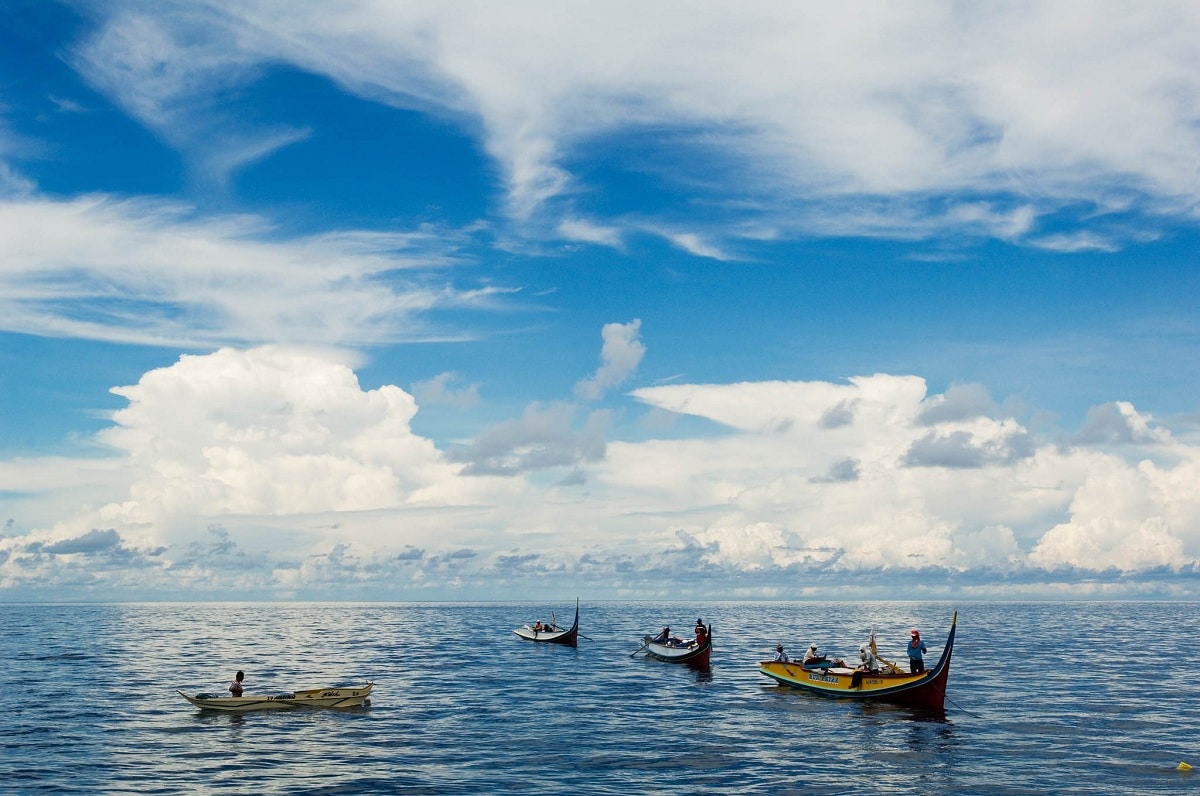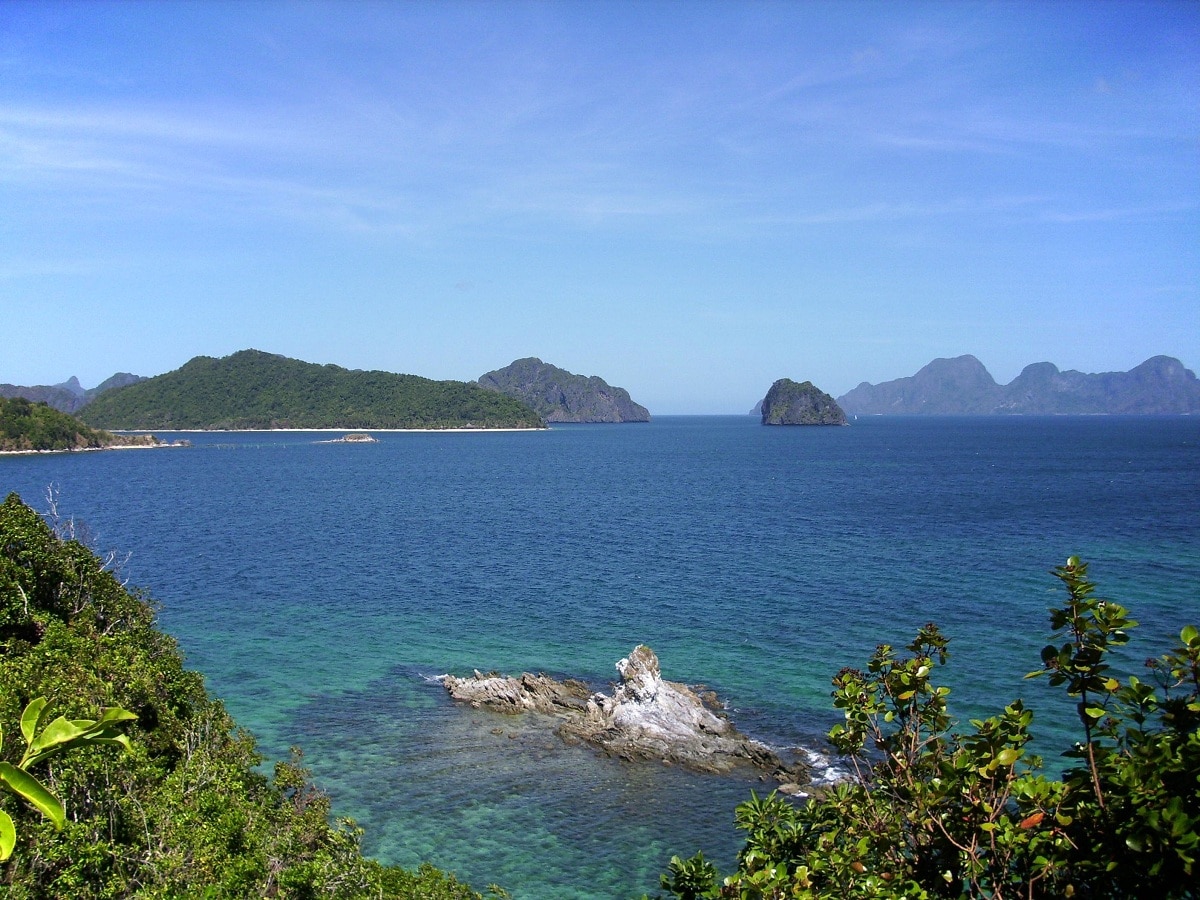
Today we are going to talk about a type of sea that has some unique characteristics and that is considered a large body of water. Its about South China Sea. It is a type of marginal sea located in the Pacific Ocean and the name comes from being in southern China. The area that this sea occupies is approximately 3.6 million square kilometers. It is located in the south of mainland China.
In this article we are going to tell you about all the characteristics, formation and importance of the South China Sea.
Key features

It is a type of sea that borders the Philippines, Taiwan, Malaysia, Singapore, Indonesia, Thailand, Brunei, Cambodia and Vietnam. To the northeast is the Taiwan Strait, to the east the Malay Peninsula and to the south is Borneo. It is considered a large body of water and has a central basin that has an elliptical shape and contains more than 250 small islands, banks, reefs, atolls and keys. There are several groups of large islands where many of them and tourism are done. A large number of rivers flow into the waters of this sea, such as the Mekong, the Pearl River, the Min, the Jiulong, the Rajang, the Pajang, the Red, the Rio Grande de la Pampanga and the Pásig.
The South China Sea is relatively shallow. Unlike other seas that, being smaller, are deeper, this sea has approximately an average depth of 1.212 meters. It has a plain warns the one who is under the waters and that it has a depth of 4.300 meters. Their exchange of water with the ocean takes place largely in a place known as the Straits of Luzon. This place is responsible for connecting this sea with that of the Philippines to become part of the eastern Pacific.
South China Sea Temperatures

If we analyze the surface and the areas near them we see that the waters are generally warm. Temperature on average they are around 29 degrees during the summer months. It is true that during winter temperatures vary, but they do so in a few degrees. It is still considered one of the warmest seas. The temperature in the winter months drops to 21 degrees, but remains almost constant with values of 27 degrees in some areas. The northern part is the coldest.
The monsoons exert a great influence on this sea. And it is that these monsoons are those that control the surface currents of the sea and the winds that blow in this part. It is very common for several typhoons to form during the summer season. It is regarded as one of the largest marginal seas in the world and is the largest in the entire western Pacific Ocean.
Formation and origin
As part of the Pacific Ocean, the South China Sea was formed from this great ocean and was generated more than 750 million years ago. At that time, there was a super continent known by the name of Rodinia. It must be borne in mind that this sea is approximately 45 million years old, although it was previously formed. It originated as a result of various tectonic events possibly after an area moved away from the rest of southern mainland China.
There are some scientists who consider that the movement of tectonic plates what relief this sea gave started about 55 million years ago. This movement intensified when the Indian tectonic plates and the Eurasian tectonic plate collided.
The basin that generated this sea even when it was young was during the Miocene epoch. This basin was expanding until reaching an expansion of the ocean floor to form a new crust after the rupture of the continental crust of the supercontinent Rodinia. It took approximately 30 million years to form. The sea was more slightly sunk during the ice Age that took place during the time of Pleistocene.
Biodiversity of the South China Sea

This sea is very rich in marine life. There are many species of fish that are an essential part of the diet of all these towns near the sea. Among the marine fauna of the South China Sea we find tuna, sardines, herring, mackerel, and croaker. However, humans are causing an overfishing activity in these places and there are some species that are on the way to being completely depleted. There are some species in danger of extinction that are not only edible fish species. We found and the green sea turtle and the Hawksbill turtle. These two turtles were very abundant in the past, although today their numbers are low. They can still be seen in some but very specific areas.
Many types of sharks make their home in these waters. Some of them are true predators such as the white shark, basking shark and the wild shark. Along the coasts, especially those located to the south of this sea, they can be seen in numerous coral reefs. In other areas there are sea grasses and numerous islands that can offer a perfect habitat for the life of some species of birds such as the brown gannet, the great-billed tern and the white tern.
One of the advantages that this sea offers and one of the fundamental reasons for being rich in biodiversity is that the South China Sea that it is very rich in natural resources. It has natural gas reserves that may become the largest hydrocarbon resource in the entire region. This makes this sea of great economic importance. Only a few of the island groups that we have mentioned above are really oil and natural gas abundant. In general, the seabed is thought to have large reserves. The waters are an important maritime route that has been navigated for many centuries.
This sea is threatened by multiple factors. Among them we find overfishing and some bycatch sites that cause a deterioration in fish biodiversity. As well numerous turtle nesting sites are affected by habitat loss and overfishing. Pollution is one of the great problems that affects biodiversity.
I hope that with this information you can learn more about the South China Sea.